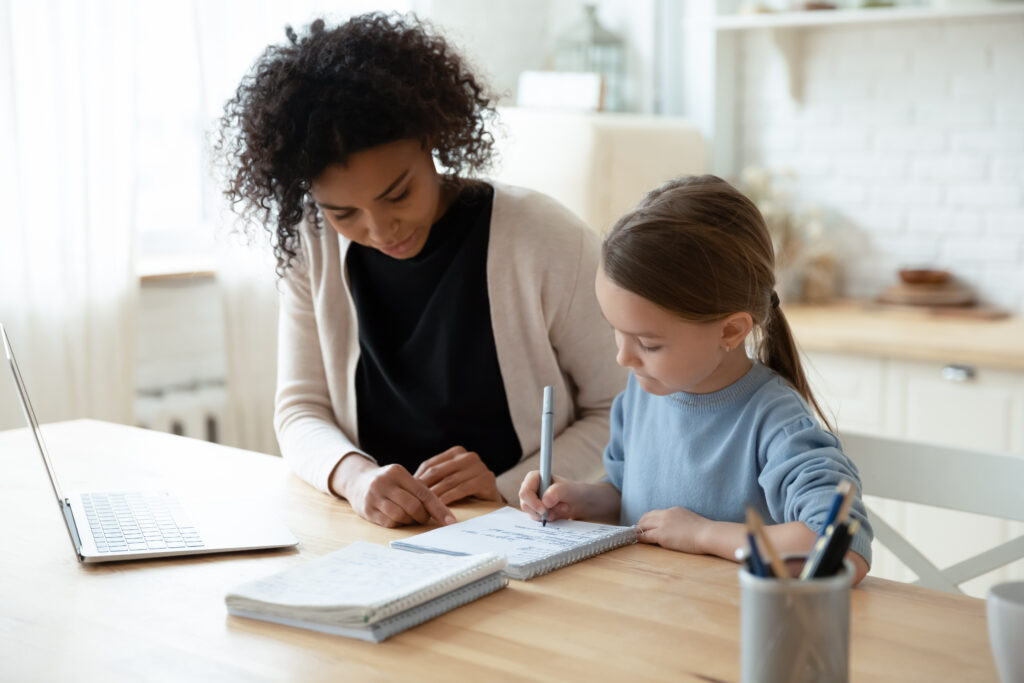(Hint: It’s Not All Academics)
Learning delays and learning disabilities are common among many students. In fact, prior to the pandemic, some research estimated that about 10% of children are diagnosed with a learning disability (University College of London, 2013). Other research has found that 20-30% of students have learning disabilities, such as Dyslexia (Yale Center for Dyslexia, 2019). About 20% of people diagnosed with learning disabilities present with significant difficulties in math. About 80-90% of people present with difficulties with reading and writing. In summary, learning disabilities are common, often overlap, and more frequent than most people think.
How did the COIVD19 pandemic impact students?
Researchers are still investigating the impact of the pandemic on learning, and will be for many years to come. Some early research, done both in the United States and internationally, have found that children with learning disabilities, executive functioning delays, mental health concerns, economic challenges, and social challenges struggled the most. Many of these circumstances also overlap, but it seems safe to say that children who would be receiving school support were the ones that lost the most progress academically. (Renaissance, 2020).
In a national research study, conducted in the end of 2020, found that the average child is currently 5 months behind in mathematics (Kuhfeld, et al, 2020). Other studies have found that improvements continued in reading, but less so in math. Some models have concluded that the pandemic has altered learning time-tables, and that typical learning expectations for all children have changed during this time (Mann et al, 2021). Even as we acknowledge inequities in achievement, it important to understand that every student learned at different rates in the pandemic. To be effective, we will need to consider everyone’s individual needs, even though we are in a group learning situation.
How Do We Help Our Students Make up for Lost Learning in Reading and Math?
Many times, parents and teachers want to help students capture the skills that were lost. Their efforts have honorable intentions. They often employ tutoring, educational enrichment, and other more targeted educational approaches. However, several experts have recommended a different approach : caring for the whole child if we want to see our children recover academic skills.
Below are some of these suggestions:
Don’t rush it.
Mann et al (2021) explains that many parents and schools are feeling pressure to “get kids back on track.” Unfortunately, there is not a quick solution to any real or perceived learning loss. By rushing our students’ learning recovery, we may be demanding children to rapidly return to “normal” at a rate that is unfair to them. The more we pressure our children to catch up, the more they will likely struggle to stay motivated and retain the material. We will need to find balance between helping them catch up and not overwhelming them.
Even as we acknowledge inequities in achievement, it important to understand that every student learned at different rates in the pandemic. To be effective, we will need to consider everyone’s individual needs, even though we are in a group learning situation.
Cindy Anderson
Don’t forget social activities.
The biggest reported stressor for children and adolescents during the pandemic was missing out on social relationships and activities. As in-person school resumed this year, many students are highly focused on their social needs and activities. If students feel like they are sacrificing social opportunities to improve academics, they will likely resist, and fall more behind. Engagement of friends in social activities, both in and out of school, will help boost achievement efforts of parents and teachers.
Pay attention to student mental health.
The pandemic and its after-effects have had a strong impact on mental health for students and their families. About 40% of Americans are estimated to meet criteria for a mental health condition, children included. In fact, over 40,000 children have lost a parent during this pandemic. Expecting our children to “over-achieve” and catch up after such a traumatizing and/or difficult time period will be not only insensitive to their needs, but also unproductive.
Returning to school in-person is additionally stressful, as many students were out of the classroom for over 15 months. It is important to monitor adolescents with heightened levels of distress (i.e., stress, anxiety, depression), as these adolescents may be at risk for later problems. Vulnerable adolescents may benefit from intervention programs, such as individual, group, or family therapy. Online mental health interventions also show potential in promoting adolescents’ mental health.
Don’t forget to validate your student
It can be very sad and hopeless for students to learn, that even though they worked hard during the pandemic, they are behind academically. It will be important to confirm with your student that learning DID occur during the pandemic. For many students, this learning not only occurred in reading or math, but in computer, technology, and software management, adjusting to social changes, and managing life stressors.
Continue to read and support healthy literacy.
Encourage trips to the library, and daily reading. Read with your child, use audiobooks and/or graphic novels to gain their interest. You may entice them to read by also watching movies that are based on books. Explore topics of interest as well as different types of literature. Enjoyment of reading is one of the best predictors of continued reading and improvement in this area.
Keep up good communication with teachers.
Your child’s teachers are likely aware of the academic and social lessons that were lost during the pandemic. However, they are also likely seeing many examples of strength and resiliency from students as well. Continue to chat or email them about concerns or successes and involve them in the goals that you have for your child. The more you can work together and support each other and your child, the more your child will learn.
Find ways to learn and practice math playfully at home
There are many ways to learn math playfully at home, without stress and extra forced homework. Depending on your child’s age, you could practice money use, adding, and subtracting by “playing store,” and making change. Cooking and baking can be ways to practice adding and subtracting fractions, especially by doubling or dividing recipes or ingredients. For older students, give them a debit card and teach them to manage their allowance. A parent could teach an older child how to use a budget and how to predict their income by dividing and multiplying. Games like PayDay, Monopoly, and many card games also provide many math opportunities. It could be a challenge, and it may take a lot of imagination, but enjoying everyday math is more likely to result in more improvement.
References
Dorn, E. et al, (2021). COVID-19 and education: The lingering effects of unfinished learning. McKinsesy and Company.
Kuhfeld, M. et al ( 2020). Learning during COVID-19: Initial findings on students’ reading and math achievement and growth, NWEA
Mann, M.J. et al. (2021). Our Children are not Behind due to the COVID-19 Pandemic, But Our Institutional Response Might be. Journal of School Health.
Renaissance, How Kids Are Performing: Tracking the impact of COVID-19 on Reading and Mathematics Achievement. (Fall 2020). https://renaissance.widen.net/s/wmjtlxkhbm
![]()

